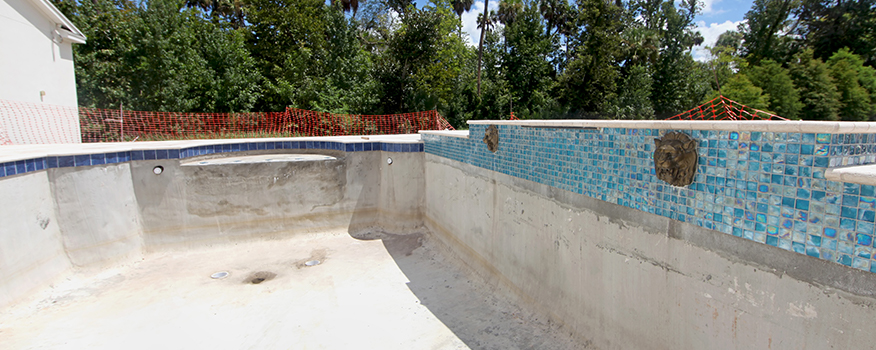Before we talk about equipotential bonding requirements for a swimming pool, we should first talk about what equipotential bonding is and how it plays a role in you or your clients’ safety.
Equipotential bonding creates what is known as “equal voltage.” If you have ever experienced a shock while on your pool deck, then you have been exposed to voltage differences. If these differences become larger, so does the presence of danger. If there is any amount of voltage in the pool, spa or deck, serious harm and even death can occur.
If you are a pool builder, you know that following proper protocol protects your reputation, decreases your liability and ensures your clients’ safety.

How does stray voltage happen?
Stray voltage occurs when there is stray electricity has been released from a cable, transformer, or other power source and is now free flowing through the ground. Water conducts electricity, making the pool and deck perfect targets for stray voltage. Even if your home’s electric system is in tip-top condition and perfectly up to code, you, your family, or your clients may still be at risk in the pool area.
While there is no way to completely avoid stray voltage, there are ways to mitigate it.
The best way to ensure security from stray voltage dangers is equipotential bonding in the pool or spa. Equipotential bonding is basically a copper wire grid that is installed in the concrete and attracts any contacts with stray voltage. This helps mitigate risk of shock in and around the pool.
Pool bonding requirements
Now that we understand what equipotential bonding is and why it’s important, let’s give an overview of the requirements for using it in the construction of pools and spas. In the last decade or so, this has become a bit of a tricky subject.
While bonding requirements (CMP17) require a rebar or copper grid around the shell of the pool or spa itself, there is no such requirement for the pool deck. In 2011, these bonding requirements were unanimously overturned by the code panel. What does this mean to the pool builder and owner?
While most experts in the field agree that rebar or copper bonding should be required around the pool surround, a point backed by multiple studies, the code does not specifically require it.
You should also know that some jurisdictions still adhere to the 2005 version of the NEC. Be sure to check with your local guidelines and regulations to better understand what may be required by your inspector.
While pool industry and utility industry experts remain at odds on this, we know that for builders, reputation matters, and the safety of your clients is top priority. We make these complex electrical problems easy to solve with our uniquely engineered equipotential bonding grid kits. They eliminate the need to search individually for all the proper parts for your next project.
Most inspectors are familiar with our patented equipment, which can aid in faster compliance and approval for builders.



